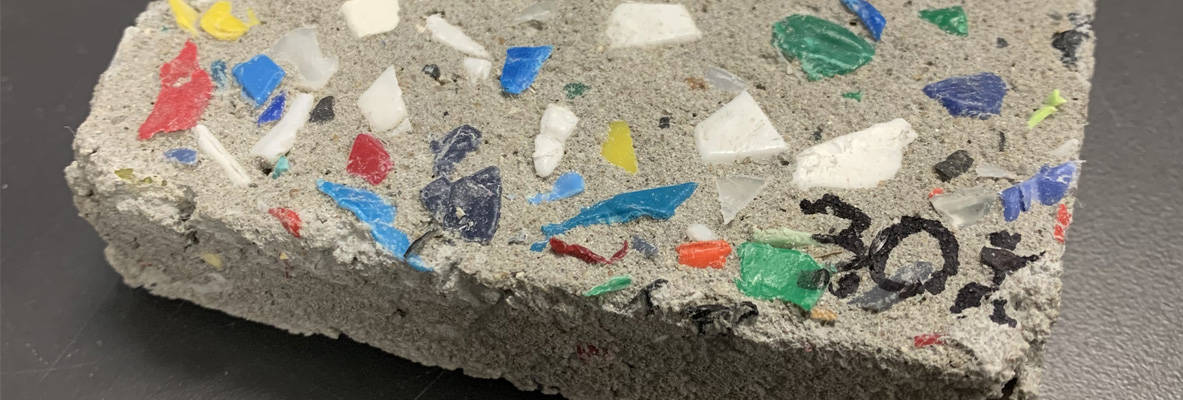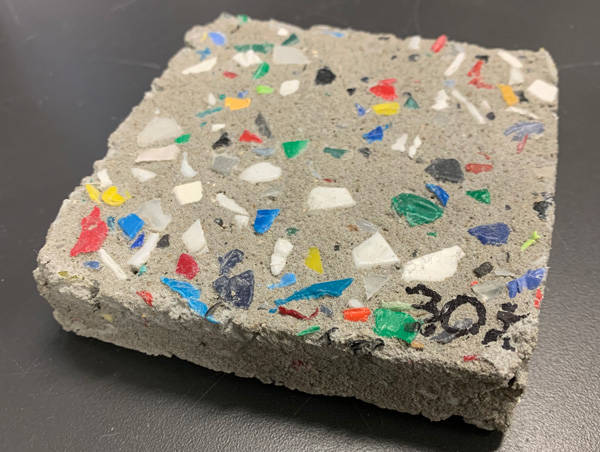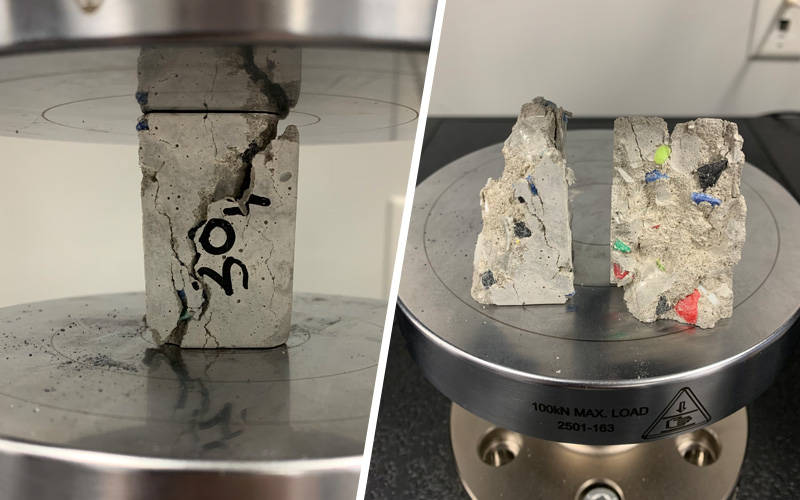
Compression Testing of Concrete Blocks with Recycled Plastic
Tales from the Apps Lab | Volume 2
My name is Meredith Bernstein, and I am an Applications Engineer at Instron. Like Landon explained so eloquently in volume 1 of our Tales from the Apps Lab series, ‘Applications Engineer’ is a fancy way of saying that it is my job to figure out how to break anything that comes through our lab. In volume 2 of our Tales from the Apps Lab series, we are going to dive right in to one of these interesting applications.
This tale pivots from Landon’s story of tensile testing to that of compression testing blocks of concrete mixed with recycled plastics. This task came to us from a research team evaluating how the strength of concrete changes when mixed with different percentages of recycled plastics. Sustainable materials like this are a necessary innovation for the future of our planet, so I was personally really intrigued to see how the results of this testing came out. Would concrete filled with recycled plastic be the way of the future? How much would these colorful little bits of plastic change the strength of something as robust as concrete?
As part of our role as Applications Engineers, sometimes we simply provide equipment recommendations, and sometimes we also provide guidance on best testing practices, depending on what kind of support our customers need. This testing challenge came to us from a group with limited testing experience, so we provided some upfront recommendations for the dimensions of their concrete blocks to ensure we would get satisfying breaks instead of simply squishing the concrete into oblivion without producing useful results. When the specimens arrived in our lab, they were slightly irregularly formed, resulting in the need for a spherically seated upper platen to allow complete contact with the upper surface of the specimen. We also tracked down some thin metal shims from our mechanical engineering lab that were secured to the lower platen to prop up the specimen just enough to ensure the upper surface could achieve complete contact with the upper platen. Improvising test setups like this is all part of the job!

Initial Specimen Size
As we tested each batch of specimens it became clear that the material consistently failed at the bonds between the concrete and plastic pieces. Surprisingly, the strength of the 20% plastic filled specimens was closest to that of the pure concrete samples, while the 10% and 30% fill specimens failed at lower forces. As a future recommendation we suggested making the bits of plastic smaller but keeping the percentages the same to see if this improves the material’s strength.

Specimen Failure
When we wrapped this one up, we saved some blocks for our “hall of fame” cabinet that adorns Instron’s front lobby across from “Instron Universal Testing Instrument, Serial No. 2” – one of the first Instron testers made nearly 75 years ago. Like our founders, we continue to innovate, working with our customers as they develop sustainable materials that shape and help preserve the world around us.
